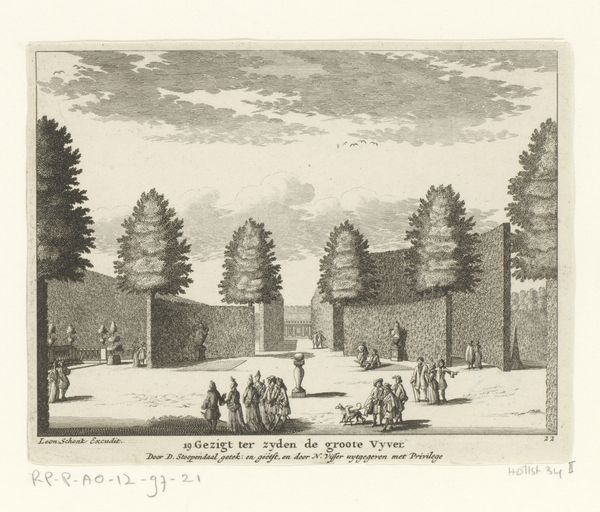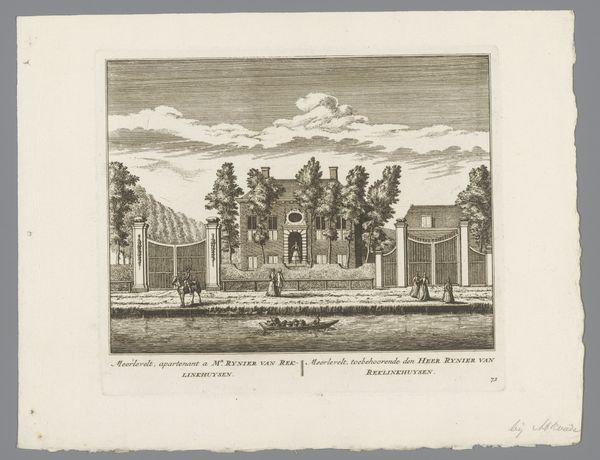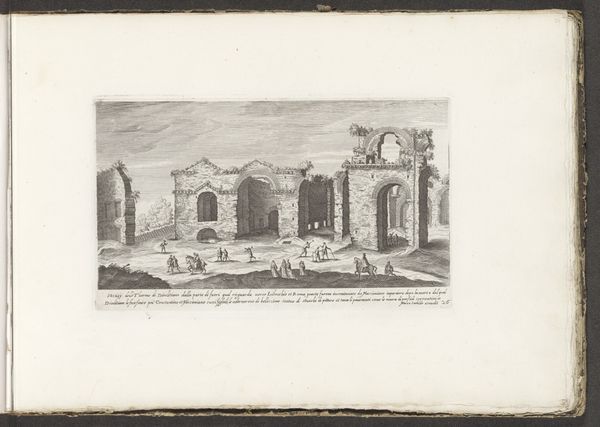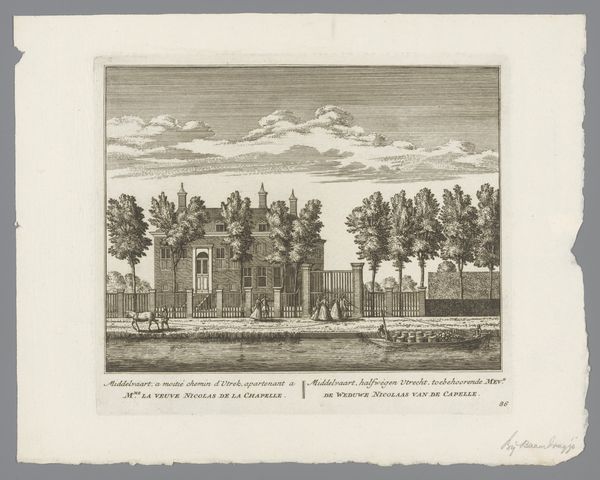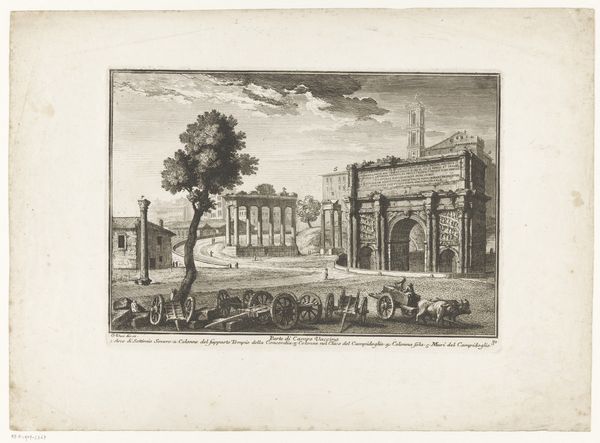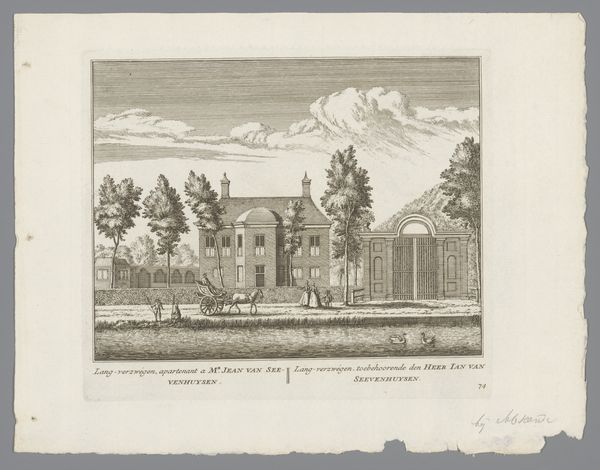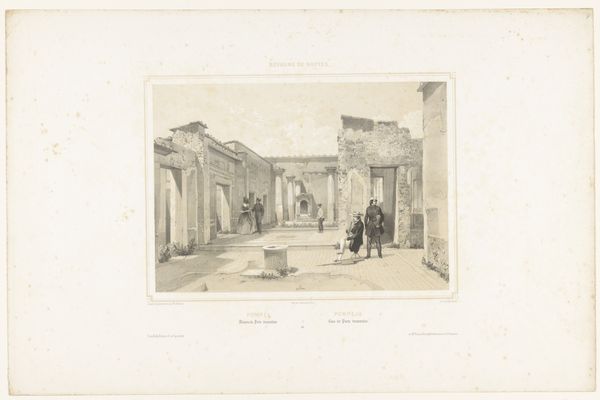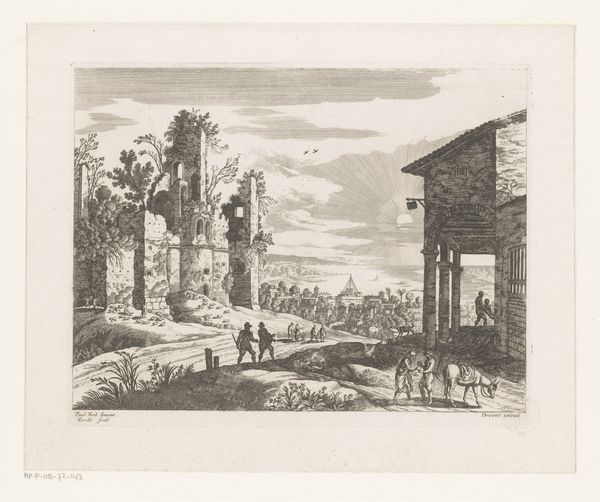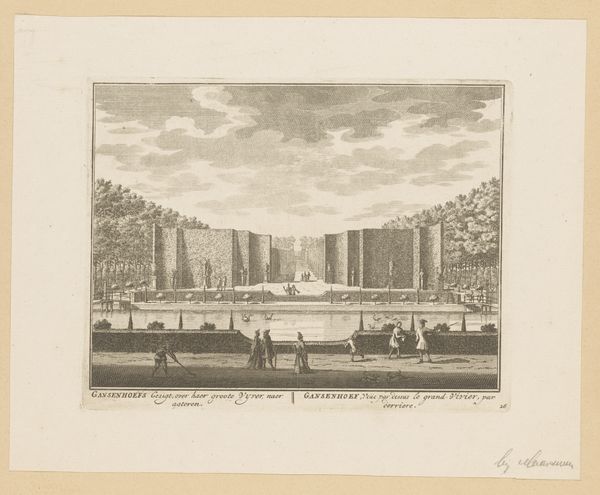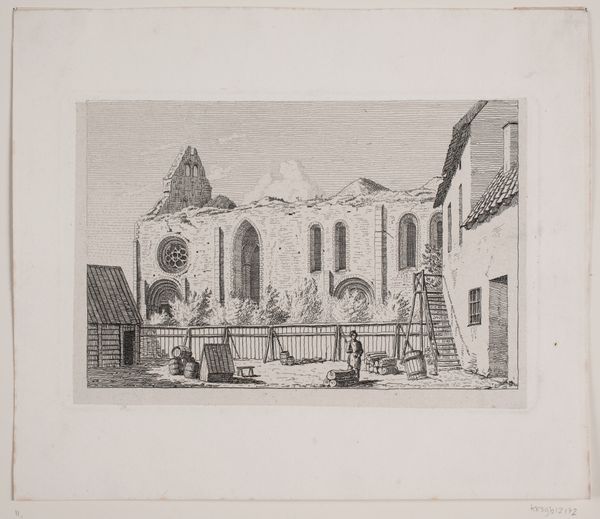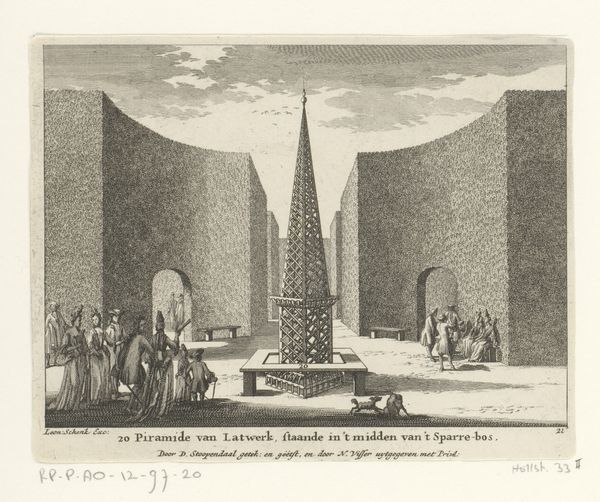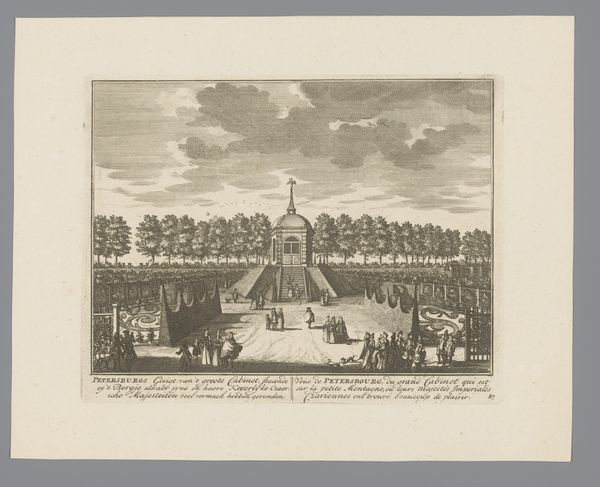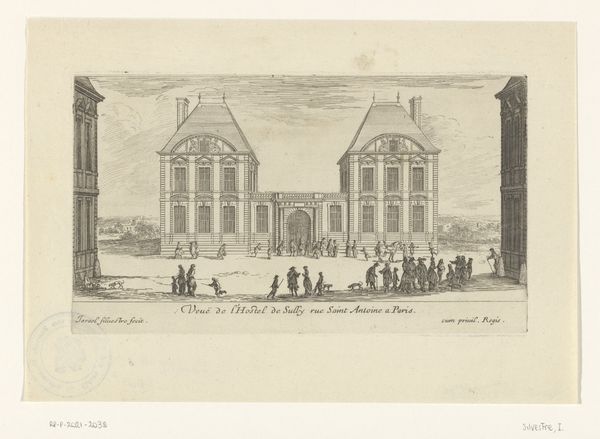
print, engraving
#
baroque
# print
#
old engraving style
#
landscape
#
cityscape
#
history-painting
#
engraving
Dimensions: height 130 mm, width 165 mm
Copyright: Rijks Museum: Open Domain
Editor: This engraving, "Fontein in de tuin van Paleis Het Loo," from around 1700 by Jan van Call, gives me a sense of formality. The sculpted hedges and classical statue in the fountain suggest a very controlled and perhaps even exclusive space. What strikes you when you look at it? Curator: I see a powerful statement about Dutch identity and power in the late 17th century. These formal gardens were not merely aesthetic; they were extensions of royal authority. Consider the socio-political context: the Dutch Republic had just emerged from the Golden Age, marked by maritime power, trade, and burgeoning colonialism. These perfectly manicured landscapes served as visual symbols of control – over nature and, by extension, over their expanding empire. Editor: So, the garden reflects control and dominion? That's interesting because at first glance, it just looked pretty and neat. Were gardens like this open to everyone? Curator: Not at all. These were spaces for the elite, designed to impress and reinforce their status. Notice how the figures are strategically placed within the landscape, carefully arranged. The arrangement signals access and privilege. Gardens became spaces for displaying power, mirroring larger social hierarchies of the era. This wasn't just about beauty; it was about demonstrating who was in charge. Do you see how the image uses the gardens as a kind of stage? Editor: Definitely, it makes you think about who had access and who didn’t. Curator: Precisely. And the engraver, Jan van Call, was likely commissioned to circulate these images, solidifying this image of Dutch sophistication and control for wider audiences both domestically and abroad. This image contributes to the palace's branding, if you will. Editor: I see that now! It’s much more than a garden view; it’s a political message cleverly disguised as a beautiful scene. Curator: Exactly. The political intent of imagery cannot be discarded in Baroque Art. Always consider audience and the artist's intent within sociopolitical environments!
Comments
No comments
Be the first to comment and join the conversation on the ultimate creative platform.
